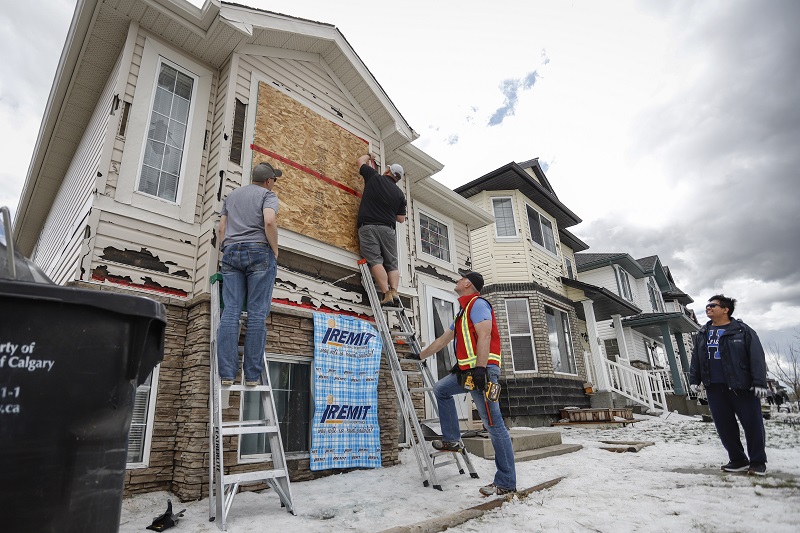Calgary hailstorm: Should city reinstate resilient roofing program?

One Calgary city councillor is suggesting the reintroduction of a resilient roofing program following a massive hailstorm in the city earlier this month that resembled a 2020 event that cost the industry about $1.2 billion.
Ward 5 Coun. Raj Dhaliwal told the Calgary Herald the Aug. 5 hailstorm could renew interest in the Resilient Roofing Program. He suggested amendments to building code requirements or bringing back the roof rebate program could help ensure more resilient homes.
Early estimates cited by the Weather Network said “at least 35,000 homes” in northern Calgary and the immediate area were damaged to some degree by the storm. The Northern Hail Project (founded by Ontario’s Western University in 2022) said preliminary findings from the storm showed the scope of damage was similar to the June 2020 hailstorm.
The Aug. 5 hailstorm and intense rain also caused significant water damage to part of a Calgary International Airport terminal, forced Calgary-based WestJet to cancel flights and resulted in the grounding of 16 aircraft with significant hail damage.
Claims adjusters told Canadian Underwriter they were seeing many commercial and residential property claims ranging from minor to major, as well as damage to buildings and vehicles.
After the 2020 event, the City of Calgary (alongside the Institute for Catastrophic Loss Reduction (ICLR)) set aside $3.25 million for the incentive program. The rebate provided up to $3,000 to homeowners wishing to install Class 4 impact-resistant roof cover, ICLR managing director Glenn McGillivray told CU.
“The program was extremely successful, having been oversubscribed,” he says. “The city opted not to re-fund the program.”
Initially launched following the June 2020 hailstorm, the program was later expanded to include any homeowner wishing to replace their roof cover with a Class 4 impact-resistant (IR) product, McGillivray says. The intent of the program was not insurance-related; rather, it was to build resiliency and raise awareness about Class 4 IR products, or roofing material specifically designed to withstand hail damage.
Reaping the benefits
McGillivray says ICLR research shows installing IR roof cover can reduce damage from hail by up to 15 times and, in high-risk hail zones, they pay for themselves eight times over.
These roofs can save homeowners $10,000 over the life of a roof. “That’s a benefit-to-cost ratio of 3 to 1 — $3 dollars for every dollar spent,” McGillivray says.
The Calgary Herald reported Ward 5 councillor Dhaliwal unsuccessfully recommended the city’s community development committee extend the roof rebate program. City council voted to discontinue it once funding ran out, despite a long wait list of applicants.
Dhaliwal could not be reached for comment by CU, but McGillivray says he’s in favour of the call to reinstate the program. Other councillors told the Calgary Herald they were wary of bringing back the program and one suggested “that’s what insurance is for.”
McGillivray highlighted the importance of a “whole-of-society” approach to disaster risk reduction.
“It can’t be just about insurance,” he says. “Others must play a role in reducing damage.”
Insurance discounts, for example, aren’t big enough to incentivize mitigation. But governments have tools at their disposal to offer bigger incentives.
“These councillors also must consider future insurability,” McGillivray says. “Insurance may not ‘always be there’ due to increasing loss experience in places like Calgary.”
Finally, places like Calgary have skin in the game, he says.
“Where do roofs damaged in storms go?” McGillivray asks. “They go to landfill.
“Large loss events can shave several years off the lifespan of a landfill. This is just one example of how cities can benefit from offering incentives.”
Feature image: Meynard Daavid, right, looks on as volunteers help board up his house as residents begin cleaning up in Calgary, Alta., Sunday, June 14, 2020, after a major hail storm damaged homes and flooded streets on Saturday.THE CANADIAN PRESS/Jeff McIntosh







